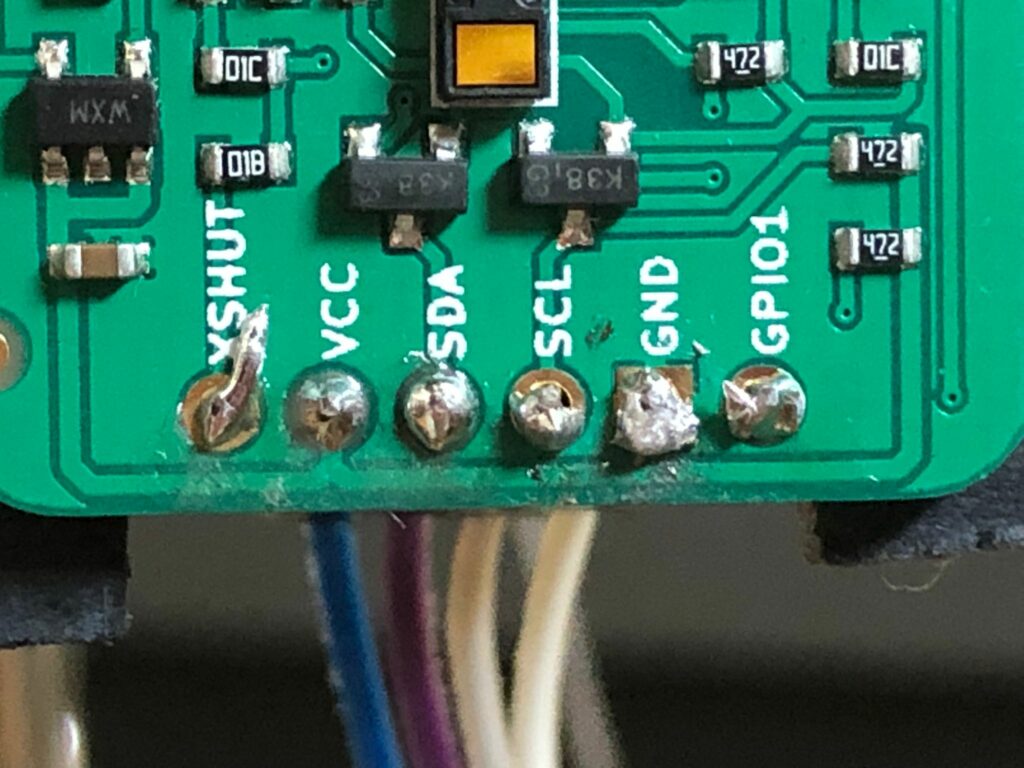Hello and welcome back! We were in the middle of deciding which sensor fits my project best – the VL53L1X or the VL53L0X?
They are pretty similar and both have enough range, however, there is one difference which made me favor the VL53L1X: the possibility to (de-)activate SPADs. The VL53L1X has a 16 x 16 spad array for detection. By default, all spads are enabled. This creates a conical field of view (FoV) covering 27°. By disabling a part of the pads, the cone can be narrowed to 15° at 4 x 4 activated spads and the direction (ROI = Region of Interest) can be specified. The VL53L0X does not offer these options. Considering my problems with detecting the appropriate finger to get the most accurate location of the fretting hand possible, I figured that the possibility to further restrict the region of interest would lead to more accurate results.
Consequently, I bought a VL53L1X on Amazon – it was quite expensive in comparison: I could have bought three VL53L0Xs for the price of one VL53L1X. I was used to having cheaper and more sensors at my disposal (I had five ultra-sonic sensors for example) and I have to admit this put some pressure on me working with the sensor because I had no second (or even) third chance in case I messed it up somehow.
This pressure intensified when I saw that the sensor came without the necessary pins soldered on. I am SO bad at soldering. I once participated in a soldering course as a child where we had to build a radio from a kit, and I just couldn’t get it to work because of my horrible soldering. The short anecdote aside, I had no choice but to try it. The result is quite appalling (even my supervisor said so) but it sort of works. Here is a picture that illustrated my shortcomings:

I now had to built rigs to attach it to my guitar. The design of the rigs is closely based on the rigs already built for the ultra-sonic sensors, using the same material and technique. I first build a rig that places the sensor on the underside of the neck. When trying out the VL53L1X sensor using rig #1, I noticed that when playing a solo my forefinger is placed a little bit before the actual fret it is fretting, and I figured that maybe I need to adjust the sensor in this regard. However, when playing a barre chord for example, the finger position is straight on the correct fret – this could evolve into a real problem.
I decided to build a second rig that places it horizontally on the neck itself in order to see if this position solves this problem. I will keep you updated on the results.
I tried rig #1 with quite good results but still have to try out rig #2. After dropping it for the third time, I also gave in to the pressure of working with one single expensive VL53L1X sensor and bought the three VL53L0X just in case. This project is getting quite expensive, and I wonder if there is a possibility to receive some funds from the KUG or FH…